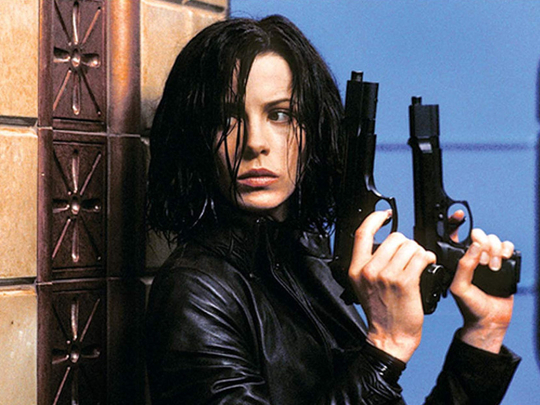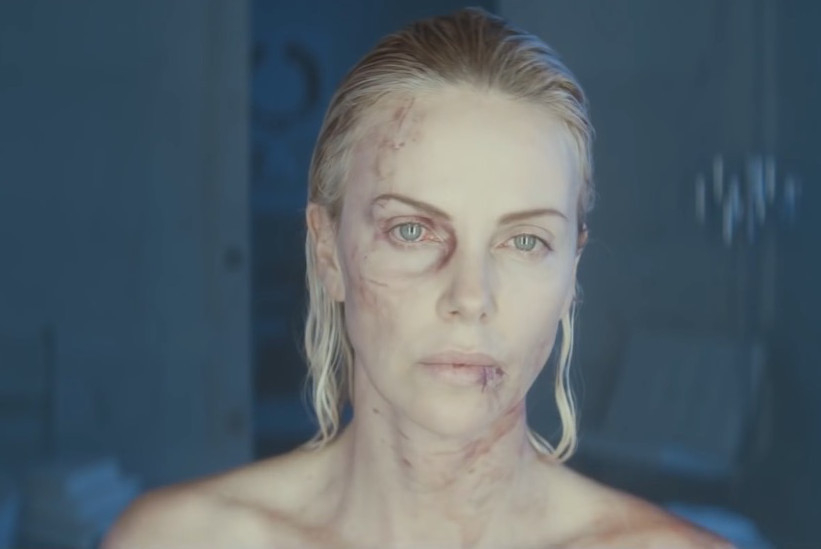
Colin Trevorrow’s 2015 reboot, Jurassic World, bagged a huge box office haul but also sparked discussion about one very controversial wardrobe choice: the high heels worn by Bryce Dallas Howard’s character, Claire Dearing. Wide shots show her clicking and clacking as she’s chased by dinosaurs in a jungle.
Women wearing unreasonable shoes in action films is historically common. But something about the sight of Claire striding in pumps captured our attention. “Was it really necessary for Jurassic World to resurrect gender stereotypes along with the dinosaurs?” wrote Jada Yuan of Vulture. Parodies ensued, including one that digitally put pumps on the dinosaurs in the original Jurassic Park
What became clear is that movie audiences are more attuned than ever to on-screen footwear, amid our culture’s greater scrutiny of gender norms in film. But a look back at the history of heroines in heels shows that the issue is more complex than it seems.
For instance, one reason Jurassic World caught flak is not just that Howard was wearing heels but also that Trevorrow didn’t hide them. Veteran costume designer Ellen Mirojnick (Cliffhanger, Speed, Strange Days) explained that it’s typical for characters dressed in heels to be shot in a way that their shoes are not visible during any of the action. Try finding a single frame of Hansel & Gretel: Witch Hunters in which you can clearly make out Gemma Arterton’s shoes in a fight.
It’s often just too difficult to perform any stunts, even running, in a heel. Some films, such as True Lies or Red, show a heroine in heels and then make it a point to show her removing them, to represent her shedding that more feminine identity, which also makes the action sequences easier to perform.
Sometimes showing the heels during action scenes is a character choice. After the Jurassic World controversy, Howard told Cosmopolitan, ”I feel really relieved at the amount of sensitivity that people have to women and women’s roles in films,” but she noted that “this character needed to seem ill-equipped to be in the jungle. She was somebody who looks like she belongs in a corporate environment.”
Think Romancing the Stone and the screwball adventures of the 1980s. Some might call such thinking retro-sexism, reinforcing old stereotypes about women even as the films seek to lampoon them. In the sequel, Jurassic World: Fallen Kingdom, out now in the UAE, she conspicuously wears boots.
Last year’s stylised Cold War spy story Atomic Blonde showed Charlize Theron’s Lorraine Broughton in heels to emphasise the stature and power of the female spy whose concentration is so focused that she can convincingly kick butt while balancing on blade-thin stilettos. She is clearly a more capable fighter than the men. There’s even a trope of action heroines flipping off their heels and wielding them as instruments of death, called “combat stilettos” (see: Single White Female). Though somewhat out of date, combat stilettos illustrate the weaponisation of the feminine, as opposed to the outright removal of it by ditching the shoes altogether.
A classic example of this comes from Hong Kong cinema: Jackie Chan’s Armour of God, wherein four Amazon women in black heels challenge Chan’s character. The women use the shoes as bludgeoning weapons. Chan, however, defeats them by taking the fight to a bridge, where their heels get wedged into the cracks between the planks, debilitating them.
Asian action films generally don’t depict women in much of a heel. The three fighters of The Heroic Trio are fine in flats. American cinema has only just started catching up.
Ruth Carter found inspiration in the footwear of Asian cinema for the costumes she designed for Black Panther.
Although there are a few valid reasons for dressing a heroine in heels, Mirojnick said that decision mostly has to do with directors and studio executives who want to see the women looking sexy.
That perhaps is why it seems that some actors, such as Kate Beckinsale, will be forever imprisoned in heels. Whether in Van Helsing or any of the Underworld films, Beckinsale is perpetually on stilts in thigh-high boots. Back in 2004, she let loose about how it took a full 30 minutes to pull on the boots, because the (male) costume designer was a “purist” who wouldn’t allow zippers. She’s even in heels in the 2012 Total Recall remake, in which she plays Lori Quaid, a character whose first incarnation had famously kicked butt in aerobics gear and sneakers.
But, on the whole, footwear has evolved. You can see a marked difference in what women wore in the “girl power” 1990s and in the early aughts, when the stiletto gave way to the chunky heel in Charlie’s Angels movies, The Long Kiss Goodnight and the Buffy the Vampire Slayer television series. In each, the heels tend to be heavy, blunt and far better for balance. (The female terminator of 2003’s Terminator 3, who inexplicably chooses to wear needle-thin stilettos, seems like a character from a very different era.) Mirojnick pointed out that chunky heels were also fashionable at the time.
Now the chunky heel has been supplanted by the wedge — as in Wonder Woman. But Mirojnick said we’re also going to be seeing more of her favourite female footwear, the knee-high black boot with a low-to-nonexistent heel, as Zazie Beetz wears as Domino in Deadpool 2. Mirojnick said it’s a versatile, practical shoe that’s both sexy and functional, while creating a beautiful silhouette.
But the decision as to which shoes a heroine will wear lies with the director. Carter described how shocked she was when Ryan Coogler, a 30-year-old man, told her that the women in Black Panther should be covered and in flats. (Carter did end up giving them a very small wedge heel, “just enough to pivot on comfortably” in battle, much like you’ll find in shoes of martial artists.)
After Black Panther, she costumed Halle Berry for Kidnap, a story about a mother who goes rogue to track down her missing son. Carter and Berry had to fight for “mum jeans” and sneakers for the character. “My direction was to put her in a tight tank top and shorts, when Halle herself even said: ‘Listen, I’m a mum. I want to represent actual mothers out there.’ “
Like Carter, Mirojnick said she has been “lucky” to work with many directors who “saw no division between the sexes” when it came to costuming. Her work on Paul Verhoeven’s 1997 satirical sci-fi film, Starship Troopers, may, in fact, be the most resonant example of de-gendered costumes in action-cinematic history.
In the film, soldiers of the future fight an endless war against huge, weaponised bugs. There are equal numbers of male and female fighters, and the men and women even share the same showers.
It was only sensible that men and women would wear the same flexible combat boot, except for Denise Richards’s Lt. Carmen Ibanez, whose small wedge heel denoted her higher status among the troops.
And, as Mirojnick reminded, “Denise is quite short.” One can never underestimate practicality.”














